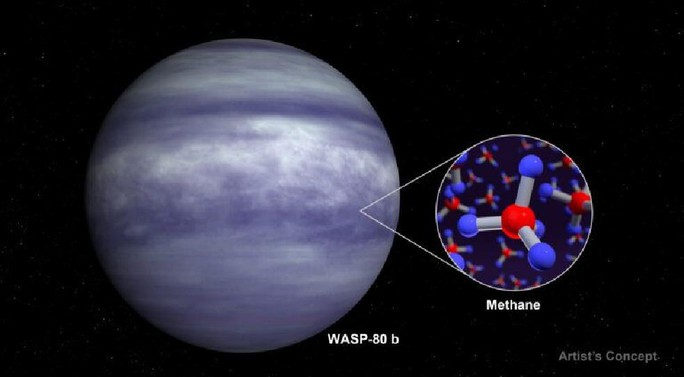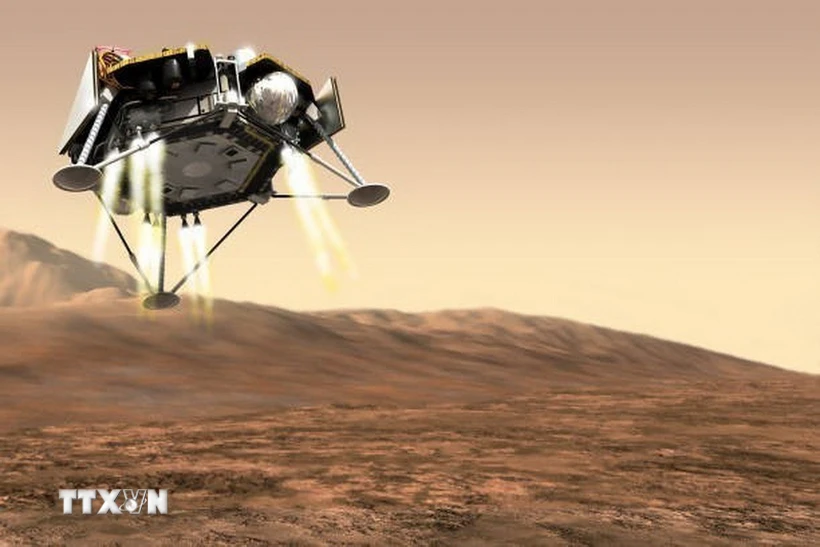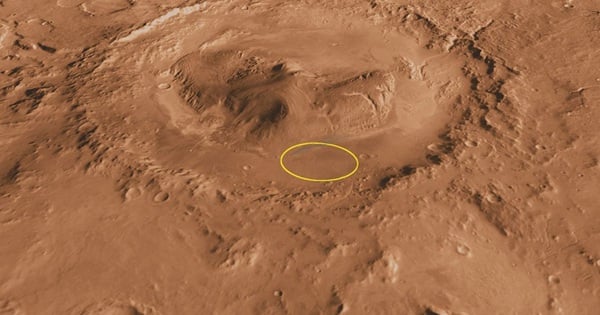WASP-80b is a warm, gas giant planet about half the mass of Jupiter. It belongs to a star system about 1.5 billion years old, 162 light years away.
Using the state-of-the-art James Webb Space Telescope, a team of scientists led by NASA has made a "golden discovery": Methane and water vapor in the atmosphere of WASP-80b.

WASP-80b has a methane-rich atmosphere. Photo: NASAĐ
Methane and water vapor are considered two of the potential signs of life that astronomers expect to find on other planets. Of these, the discovery of methane is of the most interest.
On Earth, large amounts of methane are produced by living organisms. Methane can also have non-biological origins, but only in small amounts. Therefore, the discovery of abundant methane on another world is considered a biosignature.
According to the article published in the scientific journal Nature, the discovery of WASP-80b serves as a detailed guide for how scientists can take advantage of the "young" James Webb observing instrument to find potentially habitable worlds.
Designed with the primary mission of hunting for ancient objects billions of light years away to study the early universe, the James Webb is also used to collect detailed spectra of the atmospheres of distant planets.
Those data reveal the chemical composition of the atmosphere, including components that might suggest the presence of living organisms or the planet's ability to support life.
The discovery of methane 162 light years away by James Webb was a breakthrough. It is also a difficult planet to observe because it is so close to its parent star that it is lost in the light.
The only sad thing is that it would be difficult to have Earth-style life on WASP-80b, a gas planet with a surface temperature of up to 550 degrees Celsius. Of course, the possibility of extreme creatures is not ruled out, because the planet is still confusing because of too much methane.
According to NASA, the discovery of methane in exoplanet atmospheres also helps to understand more about how this biological gas exists on planets in the Solar System.
In addition to hinting at life, methane also helps understand how planets form and how they "migrated" away from or closer to their parent stars in the past.
(Source: Nguoi Lao Dong)
Source



![[Photo] April 30, 1975 - Steel imprint engraved in history](https://vstatic.vietnam.vn/vietnam/resource/IMAGE/2025/4/26/b5a0d7f4f8e04339923978dfe92c78ef)
![[Photo] Panorama of the rehearsal of the parade to celebrate the 50th anniversary of national reunification](https://vstatic.vietnam.vn/vietnam/resource/IMAGE/2025/4/26/afd7e872ef6646f288807d182ee7a3da)

![[Photo] Ho Chi Minh City people's affection for the parade](https://vstatic.vietnam.vn/vietnam/resource/IMAGE/2025/4/26/7fcb6bcae98e46fba1ca063dc570e7e5)
![[Photo] Attractive extracurricular lessons through interactive exhibition at Nhan Dan Newspaper](https://vstatic.vietnam.vn/vietnam/resource/IMAGE/2025/4/26/1f307025e1c64a6d8c75cdf07d0758ce)
























![[Photo] President Luong Cuong meets with Lao Prime Minister Sonexay Siphandone](https://vstatic.vietnam.vn/vietnam/resource/IMAGE/2025/4/25/3d70fe28a71c4031b03cd141cb1ed3b1)































































Comment (0)